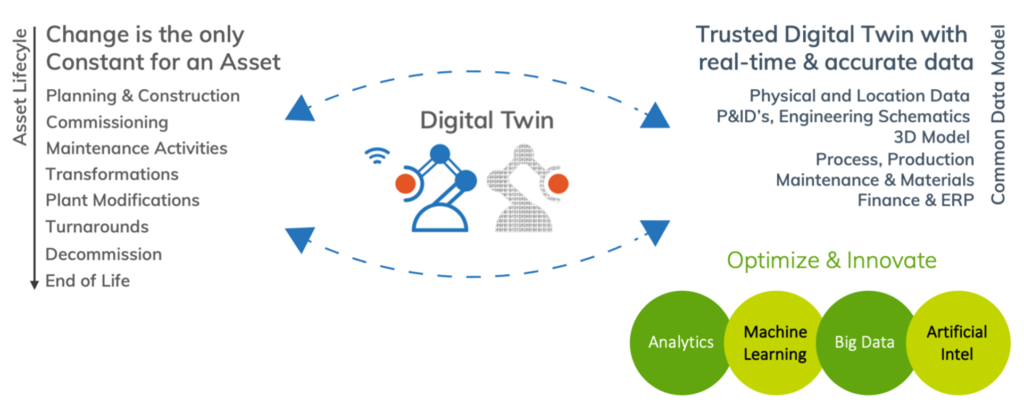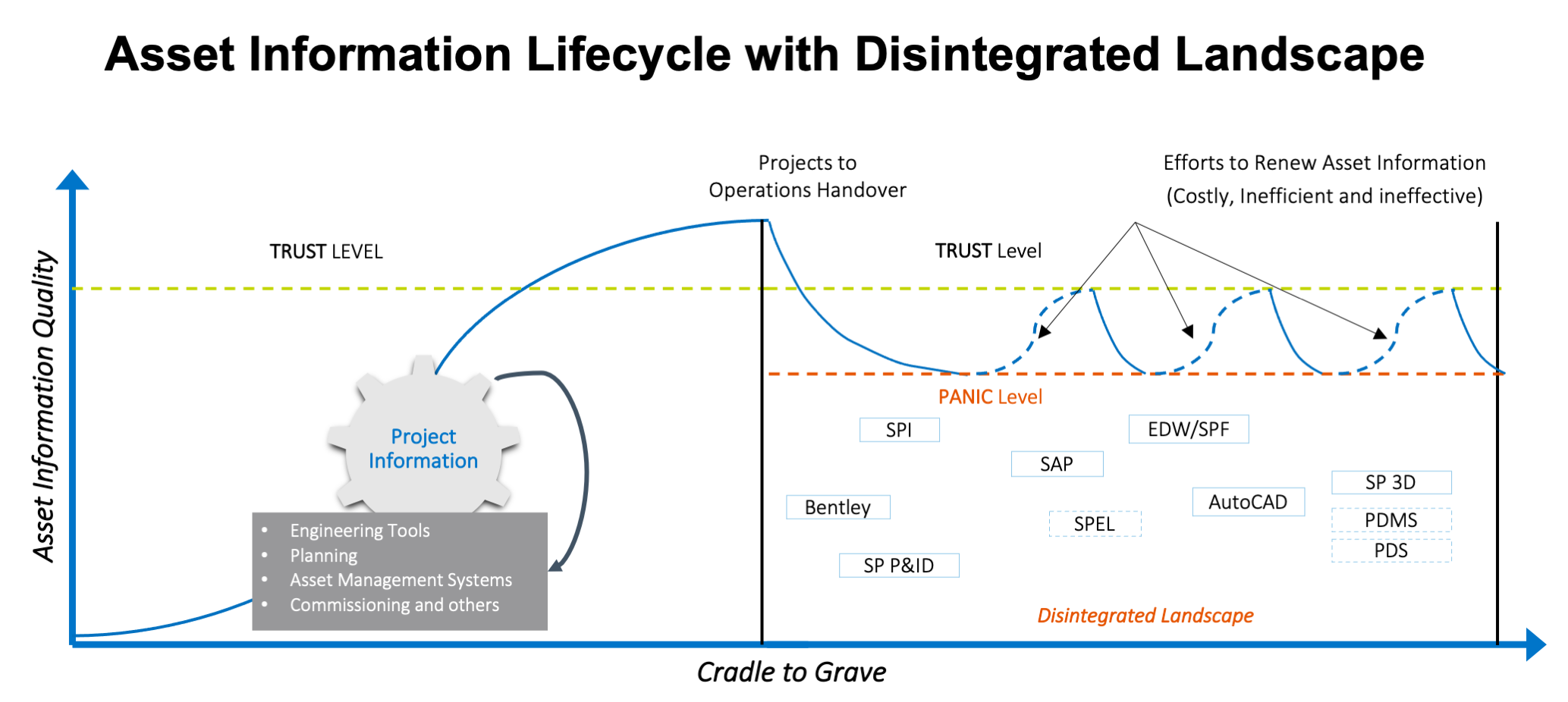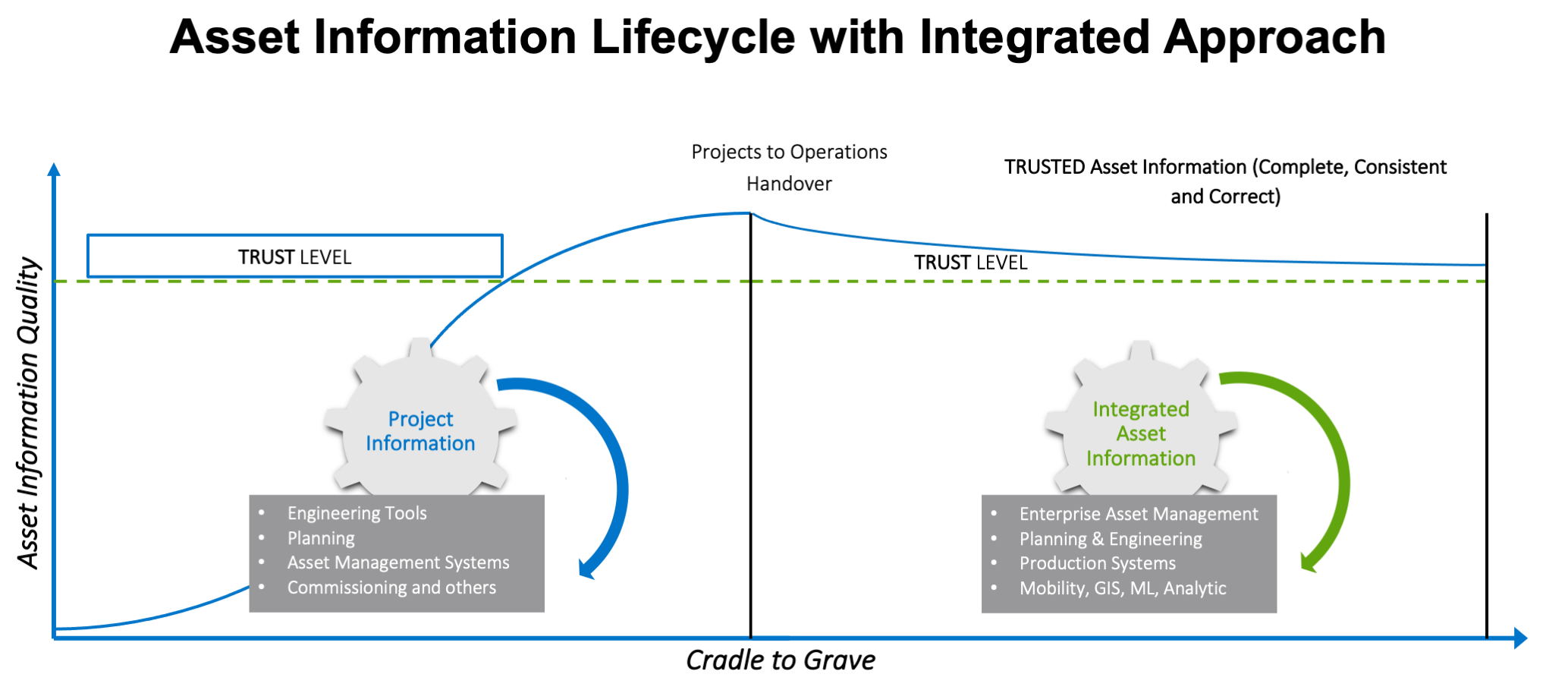The vision of trusted data for enterprise asset management
A non-negotiable and high-priority objective of any CXO is to have trusted data and utilize it for strategic advantage – and this is critical in Enterprise Asset Management where quality and productivity depend on reliable data. Studies show that more than 90% of the executives believe their company has not achieved a high level of data maturity. With reliable data, there is an opportunity to achieve the objectives of organizations’ business-critical initiatives:
- Energy efficiency increase
- Operating cost reduction (OEE improvement)
- Maintenance excellence
- Assets reliability
- Automation
- Process harmonization
- Systems consolidation / migration / transition / integration
- Increased safety
- Maximizing production
- CAPEX programs – efficient projects
However, the inaccurate and incomplete enterprise asset data is adversely impacting the desired results from these key initiatives.
Dynamic asset information lifecycle
Data is the foundation of efficient asset management. Assets, irrespective of industries, are continuously changing throughout their lifecycle. Assets undergo multiple phases during the lifecycle including design, construction, commissioning, operations, maintenance, modifications, turnarounds, and decommissioning. This implies that the information associated with an asset is also very dynamic in nature.
Since the beginning of the Industrial Revolution, it was a requirement to capture enterprise asset information. Early on this was accomplished using paper files, then basic computer programs followed by more sophisticated EAM tools. Now the aspiration is to achieve transparency about the condition of an asset in real-time using a digital twin, the virtual representation of a physical asset.
It’s now no more debatable that there are considerable benefits for an organization to achieve the state of a real-time digital twin and the ability to maintain it or in other words – “KEEP IT GREEN” (demonstrated in the picture below)
However, most organizations find it difficult to achieve the status of a real-time synchronization between the physical asset and its digital twin, due to the complexity involved and spread of data (including the inter-dependencies) across business functions.

Advantages of trusted data for enterprise asset management
Before we move forward towards a working solution to this problem, let us take a high-level view on the advantages of trusted data. There are multiple case studies and research available, to support the benefits in these areas.

The potential benefits can range from an efficient project planning and execution to a reduced cost of maintenance and operations. Trusted data also opens a robust base for continuous improvements. Moreover, there is potential to achieve more that 50% improvement in business process effeciency with accurate data.
Degradation of enterprise asset information
In most of the cases and if the project information management (including handover), is handled efficiently, the asset information is comparatively of good quality when the asset is first commissioned. The next level of challenges occur at interface points and during the lifecycle. The information degradation happens mainly due to disintegrated systems, lack of procedures, and lack of hygiene in following the protocols.
The typical asset information lifecycle without integrated systems is demonstrated below.
Integrated approach for efficient enterprise asset management
Normally we take into consideration – people, processes, and technology for any step change. This is also true in this case. Since we are dealing with large amounts of continuously changing data, it becomes very difficult to manage all three pillars on a real-time basis. But this is the only path for this journey.
In my experience, I have been associated with multiple asset-intensive companies across industries ranging from refineries, chemical complexes, offshore facilities to FMCG majors. There are a lot of similarities among the successful programs, irrespective of industries. Together, the building blocks listed below constitute an integrated approach to achieve a high level of synchronization between your physical and your digital asset system.
- Management commitment
- Thought leadership
- Champion – program owner
- Tangible planning
- Build the understanding of the current state
- Roadmap for desired state – stagewise or per function roll-outs
- Controlled change management
- Active involvement of business functions
- Continuous updates
- Training and workshops with all business functions and users
- Robust procedures and technology
- Continuous improvement and benchmarking (utilize the industry standards, such as CFIHOS, ISO 14224, ISO 55000)
The typical asset information lifecycle with an integrated approach is demonstrated below.
Where and how to start?
Many times, I have seen that a systematic assessment can be very useful to lay a robust foundation of the journey from untrusted to trusted data. The journey might begin at one pilot site. I will be sharing in my next blog, the details on:
- How to make the assessments effective and efficient?
- How to select a site as a starting point?
Webinar
Are you interested in this topic and want to learn more about how to start? Sign up for our on-demand webinar.



